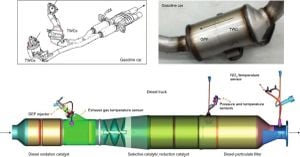Maize, known as Zea mays L., plays a pivotal role in global agriculture, acting as both a staple food source for humans and livestock as well as contributing significantly to energy resources, particularly through biofuels. Its cultivation spans diverse climates, making it economically and socially significant worldwide. With countries like the United States, China, and Brazil leading production efforts, enhancing their yield remains imperative for meeting growing global demands.
Within Brazil, the North/Northwest regions of Rio de Janeiro are undergoing efforts to optimize maize production through the introduction of various genetic hybrids. A recent study conducted evaluated eight different maize hybrids across three strategic locations during the winter 2021 and summer 2021-2022 seasons, employing GGE (Genotype by Environment) biplot methodology to assess adaptability and stability.
The GGE biplot technique effectively captures the complexity of genotype by environment interactions, which can obscure the selection process for favorable hybrids under specific conditions. This method enables researchers to evaluate both main effects of genotypes and their interactions with different environments, identifying high-performing cultivars resistant to unpredictable climatic variations.
The study found single and double commercial hybrids to exhibit higher productivity and adaptability, confirming their strength against fluctuated agricultural conditions. Meanwhile, the UENF interpopulation hybrids, exhibiting solid stability and lower productivity, offer accessible options for local farmers due to their cost-effectiveness.
Notably, the UENF 506-11 hybrid stood out across various metrics, aligning its highest values for ear length and responsiveness within optimal growth environments. Similarly, other genotypes such as 30F35R and LG 6036 illustrated admirable performance, underscoring the hybrids’ potential for reliability and productivity.
Employing variance analysis indicated strong significance across traits assessed, with genotype performance clearly differentiable under varied climatic imprints. These results not only encapsulate the effectiveness of GGE biplot analysis but also reveal the necessity for multi-environment assessments when selecting crop cultivars.
Overall, the recommendation to employ UENF hybrids for maize cultivation reflects their promising adaptability and stability within the targeted regions of Rio de Janeiro. The local agricultural community could greatly benefit from these findings as they look to cultivate maize more effectively, reinforcing how advanced methodologies like GGE biplot analyses can reshape agricultural practices.



